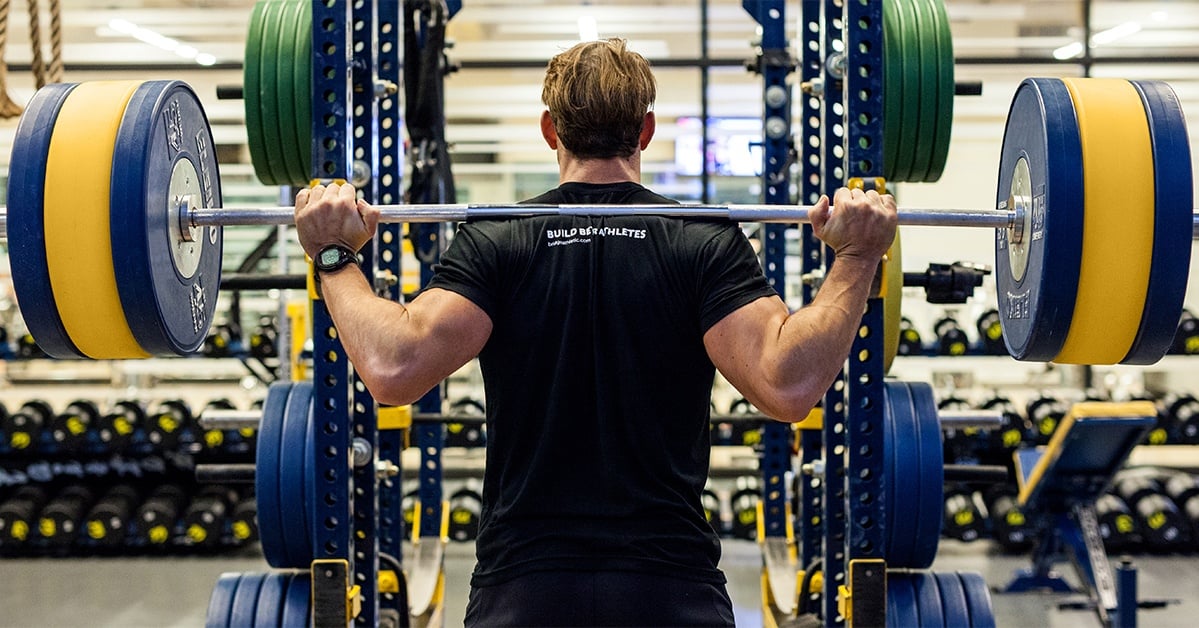Neural Adaptations and Strength Training
Strength training develops motor neuron pathways that enhance an athlete's brain-body coordination during functional movements. The “neural adaptations” athletes undergo in training refer to the brain’s ability to recruit muscles to contract and produce a particular movement. Practicing an exercise with resistance teaches an athlete's brain to fire the correct muscles to achieve the desired motion. Over time, the athlete’s technique for the exercise becomes ingrained and the movement becomes more automatic.
Motor Neurons
Motor neurons are nerve cells that originate in the central nervous system and end at the muscle fibers in the neuromuscular junction. Signals sent from the brain run along the motor neuron to the muscle fiber to produce movements or muscular contractions. Some motor neurons are devoted to autonomic functions, such as signals sent to the diaphragm to contract which allows individuals to breathe.
Alternatively, other motor neurons are dedicated to voluntary movements, like strength training. When attempting new exercises, an athlete’s brain must send signals along motor neurons to the correct muscle fibers in order to contract. When athletes lift heavier weights, the frequency of motor neurons firing increases and the number of muscle fibers contracting increases. Ultimately, the growth in motor neurons and muscle fibers builds muscle mass in athletes.
Muscle Memory
Muscle memory, also known as neuromuscular facilitation, is the process by which muscles become familiar with certain motor skills. Furthermore, when signals from the brain are sent to the muscle, a pathway becomes established and this process becomes semi-automatic. Once this happens, athletes won’t need to concentrate intensely to create the desired movement. It is likely that the muscle tissue will also develop long-lasting changes (i.e. increases in fiber size and changes in fiber composition).
Strength Training
Functional strength training helps athletes develop muscle memory so that they can quickly access their movement patterns during a performance. The neuromuscular system goes through a cycle when developing strength:
Teach the brain to fire correct muscles to contract with a new movement, add resistance, recruit more muscle fibers to oppose the resistance, build strength and adapt to the resistance, increase the complexity or resistance, and repeat.
Complex strength training exercises involving the whole body demand greater muscle recruitment and more closely approximate the demands in each sport. For example, a deep squat will yield a greater gain for an athlete than a biceps curl because the squat requires coordination among the hamstrings, hips, glutes, quads, and core to complete the movement.
Additionally, performing strength exercises when the body is fatigued will teach the brain to recruit muscles when it normally does not. This adaptation is useful at the end of a race, game, or event when an athlete's strength normally begins to wane.
Sufficient Load, Velocity, and Complexity
If athletes do not perform an exercise with sufficient resistance, velocity, or complexity, they might develop muscle memory for an improper movement pattern. Because practice solidifies muscle memory, athletes should pay attention to how they execute resistance training.
Sufficient Load:
Most resistance training will be conducted at 60-80% of 1RM. More qualitatively, athletes should be getting through 6-8 reps of a given exercise where the last couple reps are challenging. As always, technique takes priority over increasing resistance. In order to reduce the risk of injury, it is important that athletes memorize the right technique before they start adding more resistance.
Sufficient Velocity:
For each exercise, athletes need to move through the movement with sufficient velocity. Strength training with speed builds neural pathways and movement patterns that enhance performance. Athletes may need to decrease resistance to ensure they can move with enough velocity and the correct technique.
Sufficient Complexity:
Whole body exercises more closely approximate the neuromuscular demand of movements in sports because they require coordination among several muscle groups to achieve the motion. Functional movements like squats, lunges, and pushups demand complexity and teach the brain to fire all the muscles necessary, whereas isolated movements only fire one muscle group at a time. Complex exercises are the most effective way for athletes to develop full body strength.
Recap
Neural adaptations are happening all the time during strength training. The brain sends signals along motor pathways to tell muscles when, how quickly, and how powerfully to contract to produce movement. Athletes should take advantage of muscle memory, and coaches should develop strength training programs that implement sufficient resistance, velocity, and complexity in order to maximize performance. To learn more about strength training check out this article about cyclic training and progressions and this article about sports periodization.
About the Author

At Bridge, we are all athletes and coaches first. As athletes, our team has experienced everything from riding the pine on JV, to winning NCAA championships, to competing in the Olympic Games. As coaches, we have helped countless athletes reach their full potential, winning everything from age group section championships to Olympic Gold Medals.
Related Posts

The Best Bench Press Variation You’re...
This post is part of our Coaches Corner series with Taylor Rimmer. Taylor is NSCA-CPT, StrongFirst...

Does Powerlifting Harm Heart Health?
A recent study has discovered that a 12-week supervised strength training program (SSTP) may result...

Barefoot Running: Is It For You? |...
Run Free: Consider Less Cushion
Updated October 2020:
With more athletes looking for ways to...
.png?width=150&height=50&name=BRIDGEBLOG(1).png)

